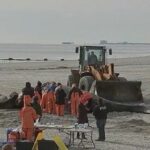Tag Archives: Bristol Bay

Why would a pediatric neurosurgeon go crab fishing in the Bering Sea?
The fears and anxieties associated with my role as a pediatric neurosurgeon are those related to my patients’ lives I have put at risk during the past 20 years. The last decade presented an opportunity for me to learn something from the commercial fishing industry about life circumstances where we experience fear and anxiety. In 2009, I was privileged to work on the F/V Miss Colleen, a commercial salmon fishing gillnet boat in Bristol Bay, Alaska. Then, in the fall of 2019 and winter of 2021, I was fortunate to be a deckhand on the F/V Saga, a commercial crab fishing boat in the Bering Sea profiled on the Discovery show Deadliest Catch. Both experiences had a profound effect on me and taught me how to switch from a “my life is at risk” mentality to one focused on preventing mistakes from happening through teamwork and effective communication. It occurred to me that there is no room for error in both the health care and commercial fishing industries. Both giving a patient the wrong medication or going overboard in rough seas can lead to death. >click to read< 18:08

Bristol Bay drift gillnetters face boat inspection
Bristol Bay commercial salmon drift gillnet permit holders have been advised by the Alaska Wildlife Troopers of upcoming inspections during the summer fishery to determine whether participating vessels are adhering to current vessel length regulations and if crews are fishing legally. Ongoing efforts by some participants in this fishery to amend current regulations to allow innovations that give them a harvesting advantage have yet to be approved by the Alaska Board of Fisheries, and no more proposals will be considered by the board before that season begins. Current state fisheries regulations limit drift gillnetters to 32 feet in overall length with few exceptions, which were carefully identified in a letter sent to every gillnet permit holder in the Bristol Bay fishery. >click to read< 09:27

Bristol Bay’s sockeye runs break records, but local permit ownership has declined for decades
This summer, 79 million sockeye returned to Bristol Bay. It was the largest run on record. But over the past half-century, there has been a dramatic shift in who fishes commercially in Bristol Bay. Local permit ownership has declined sharply, and research shows that’s due in part to a regulatory change to Alaska’s fishery management from the 1970s. Propelled by years of low salmon returns and more people coming to the state to fish, Alaskans voted in 1972 to amend the state’s constitution and implement a limited entry system. This system restricted the number of commercial fishing permits in areas around the state, including Bristol Bay. >click to read< 08:14

‘A life on the mud’ for setnetter who fishes from Bristol Bay beach
Liz Moore spends most of the year working from her Shoreline, Wash., home office, where she helps evaluate programs run by governments and nonprofits. In the late spring of each year, she returns to this Southwest Alaska community, where she was raised, to pick sockeye out of setnets that stretch from a muddy beach. The shoreline setnet operation she runs includes a half-dozen skiffs and a crew of 10 men and women, some of whom come from as far away as New York. “When we get back to Seattle … it’s a life on pavement,” Moore said. “Here, it’s a life on mud, and I think I’m much more suited for a life on the mud.” >click to read< 15:04
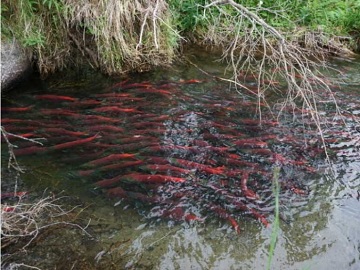
Bristol Bay’s sockeye run is already the biggest on record
Bristol Bay’s 2022 sockeye run is now the biggest on record: 69.7 million fish have returned this summer. That surpasses the previous record of 67.7 million fish, which was set last year. Bristol Bay’s commercial fleet hauled in the most fish on record this year. More than 3 million sockeye have swum up the Wood River to spawn in the tributaries around Lake Aleknagik, about 20 miles from Dillingham, according to the state’s counting tower on the river. Sherol Mershon lives along the lake near the head of the river. She owns a bed and breakfast there and has hung commercial fishing nets for 45 years. She said this year’s runs are remarkable. >click to read< 12:10

Bristol Bay Fisheries Report: July 17, 2022
Harvests slowed down Saturday. The bay-wide haul was 851,000. This year’s all-time biggest harvest now totals 55.6 million fish. But escapement is still below the record. 17 million fish have made it to spawning grounds across the bay – short of last year’s bay-wide escapement of 25.6 million. Still, the runs up a few rivers have exceeded their maximum escapement goals, and many others have met escapement. >click to read< 12:10

Historic Sailboat begins voyage to Naknek
For more than 60 years, sailboats dominated Bristol Bay’s commercial fishery. Motorized vessels were illegal. Then, in 1951, the federal government finally allowed motorized fishing vessels in Bristol Bay. LaRece Egli, the director of the Bristol Bay Historical Society Museum in Naknek said almost immediately, sailing was made obsolete for the fishery. “I think it’s literally down to 50 or 46 boats or something like that in 1954 and then they just disappear,” she said. By 1952, powerboats outnumbered sailboats 4 to 1. In less than five years, every commercial vessel had a motor. This year, local historians are bringing the sailing tradition back to the bay with a vessel named the Libby, McNeil, Libby, No. 76. >click to read< 10:39
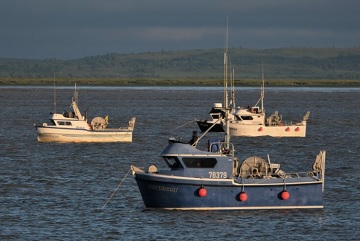
Bristol Bay Fisheries Report: July 4, 2022
Messages to the fleet – Happy July 4thto Captain Mike “Fishhead” Fourtner and the hard-working crew on the newly christened “Twin Tuition” on he first season earning her way on the bay! Every challenged faced in making this season’s opener in time showed how fisherman and the industry rallied to help. Have a great season, be safe and watch that line. Take baby pictures! From the crew of the Deborah Ann – Charleston SC. To Lewis and Joanna on Coffee Point – call home. Happy 4th of July. Audio reports, lots of updates. >click to read< 20:01
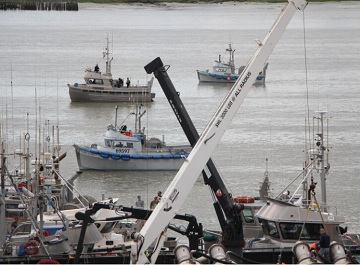
Silver Bay Seafoods agrees to pay fine for illegal dumping in the Naknek River
Sitka-based Silver Bay Seafoods earlier this month agreed to pay a fine of $467,469 for illegal dumping at its Naknek River facility in Bristol Bay. The company has also agreed to address violations of its state permit to discharge pollutants. The state Department of Environmental Conservation said in a press release that Silver Bay “repeatedly discharged significantly more fish waste into the Naknek River than permitted” in 2017 and 2020. State inspectors also found numerous violations at the facility during a scheduled inspection last year, like discharging bloody water. >click to read< 12:11

PWS harvest soars above 9M fish, statewide catch exceeds 16M salmon
Commercial harvesters in the Prince William Sound region delivered upwards of 371,340 salmon through Tuesday, June 28, while the statewide preliminary harvest exceeded 16 million fish, including deliveries in Bristol Bay, Cook Inlet, Kodiak and the Alaska Peninsula. Harvests reached almost 8% above year-to-date 2021 (2020 for pinks), led by strong sockeye harvests in the Alaska Peninsula and Bristol Bay regions, according to Sam Friedman, who is producing the McKinley Research Group weekly in-season reports on behalf of the Alaska Seafood Marketing Institute. For Prince William Sound, harvests and the weights of salmon harvested remained below the 10-year average, according to Alaska Department of Fish and Game biologist Jeremy Botz, in Cordova. >click to read< 09:06
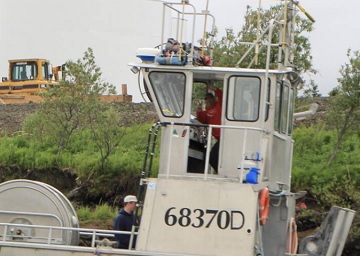
Bristol Bay Fisheries Report: June 28, 2022
The price of fuel is on the rise in the United States and many industries are feeling the pressure. Rural areas generally face higher prices for fuel, but in recent months, Bristol Bay residents have seen those prices creep even further. Bristol Fuels in downtown Dillingham Gas set their price at $5.49. In Naknek, the same company charges even more, at $6.64 per gallon. Shannon Williams is based out of Naknek and fishes on the east side of the bay. She said that she’s going to need to work harder to keep up with expenses. “It’s gonna be hard,” she said. “I’ve got to pick a lot of fish to pay my bill.” >read, or listen to the report< 18:39
Peter Pan Seafoods announces price increase to $1.15 per pound for Bristol Bay sockeye – Peter Pan’s vice president, Jon Hickman, says the price bump is part of the company’s assessment of the season so far. “And wanting to relay that to the fishermen, as we consider our business partners in this industry, that we believe we can go a little higher,” >click to read<

Cody Umentum of Denmark went from a Mexican beach to the F/V Wizard
Little did Cody Umentum know that, in the four years after he graduated from college, he would visit over a dozen countries on multiple continents and have one of the most demanding, rewarding and incredibly dangerous experiences of his life. He went from sipping cocktails on a little island in Mexico to fishing for crab as part of the crew under captain Keith Colburn of the FV Wizard, a 156-foot boat featured on the Discovery Channel series “Deadliest Catch.” In all, he took two trips aboard the Wizard, but the second one truly tested his limits. With terrible storms, in the middle of the northern reaches of the Packifc ocean, and working over 80 hours a week, he often thought he had made a mistake. >click to read< 09:45

Survey says processors are beefing up for record Bristol Bay run, but it still might not be enough
If the state’s forecasts for the 2022 Bristol Bay sockeye run are even close to accurate, there could end up being millions more fish to catch than anyone is willing, or able, to buy. A survey conducted in January by the Alaska Department of Fish and Game of 15 Bristol Bay-area processors found that the processing companies intend to purchase up to 52 million sockeye this year. However, the department is predicting a record Bristol Bay inshore run next year of more than 73 million fish, which would provide nearly 62 million available for harvest based on the escapement goals for each of the major river systems that feed the Bay. The record-level prediction follows a record inshore run of more than 66 million sockeye last year that lead to a commercial harvest of 40.4 million fish, one of the largest Bristol Bay sockeye harvests ever. >click to read< 12:07

Boom-bust commercial salmon season doubles 2020 value
This summer was significantly better for commercial salmon fishermen in Alaska than 2020, though that success was far from evenly spread. Commercial salmon fishermen hauled in salmon valued at $643.9 million this season, according to the Alaska Department of Fish and Game. That’s more than double the 2020 value of $295.2 million, but still a little behind the estimated 2019 value of $657.6 million. Overall, 2021 ranks fairly well in the historical averages for numbers of salmon harvested and poundage as well as in value, according to Fish and Game data. >click to read< 16:37

One Alaska Bay Is Booming With Salmon, For Now
Bristol Bay’s sockeye harvest has long made up about half of the global catch of this species, in a seasonal blitz as short as it is enormous: The fishery lasts a mere six weeks. Each summer, 15,000 seafood processors, boat-based fishermen, and setnetters, including families such as the Bandles, gather here to support an industry worth more than $2 billion in 2019. Some fishermen will net enough cash to live on until the fish come back the next year. And this year, Bristol Bay outdid itself,,, But such riches are localized. Outside of Bristol Bay, salmon fisheries are failing, including those on British Columbia’s famed Fraser River, on Alaska’s Chignik and Copper Rivers, and in Cook Inlet. Five hundred miles north of Bristol Bay, Yukon River salmon runs have totally collapsed. >click to read< 12:35 ADFG: Bristol Bay sockeye runs set all-time record – It’s official: Bristol Bay’s 2021 commercial salmon season was the largest on record. >click to read<

When Sailboats Ruled Bristol Bay
One hundred and thirty-two years ago, the Bristol Bay commercial fishery began on the shores of the Nushagak River when the first cannery went into operation and canned a little more than 4,000 salmon. Within four years, three more canneries appeared on the Nushagak, and within a decade canneries were built on the Naknek and Kvichak rivers. The dawn of the 20th century saw dozens of canneries around Bristol Bay catching, processing and canning millions of pounds of sockeye salmon every summer. By 1910, Bristol Bay accounted for 40 percent of Alaska’s commercially caught salmon. Even today, Bristol Bay makes up about 40 percent of Alaska’s salmon value. photo’s, >click to read< 11:50

Net migration: Young commercial fishermen ship out of Cook Inlet
The Cook Inlet salmon fishery was once an economic engine for Kenai. But the fishing there is no longer lucrative. Many fishermen with deep ties to the inlet are retiring, or moving elsewhere. The F/V Nedra E is smaller than the other boats bobbing at the dock in Naknek. Thor Evenson didn’t have Bristol Bay in mind when he designed the boat for his parents, Nikiski homesteaders Jim and Nedra Evenson. Until last year, she’s been a Cook Inlet boat, captained by Jim, then his nephew, and now his grandson, 32-year-old Taylor Evenson. Last year, Taylor couldn’t put it off any longer. So with the help of the boat’s original builder, Kevin Morin of Kasilof, he gutted everything behind the cabin, chopped several inches off bow and stern, and installed a brand new deck, to bring the Nedra E in line with Bristol Bay standards. >click to read< 07:50

A Perfect Pairing. A Q&A session with John Deere and Mike Blocher of North River Boats
North River Boats in Roseburg, Oregon is one of the largest heavy-gauge aluminum boat manufacturers in the United States with an estimated 10,000 vessels plying the water today. The company continues to diversify, adding the legendary Bristol Bay hull to its lineup. John Deere: What led to the building of this new commercial fishing vessel? Mike Blocher: We build heavy-gauge aluminum boats. During an International Workboat Show, we were approached to build a bay boat. Our general manager and I traveled to Bristol Bay and started looking at boats, talking with fishermen, and found out what worked and what did not. JD: What did you find out? MB: Bristol Bay is unlike any other commercial fishery,,, >click to read< 11:06

Bristol Bay Fishermen Donate Salmon To Yukon River Villages responding to lack of subsistence salmon fishing
Around 10,000 pounds of Bristol Bay chum and Chinook salmon are scheduled to arrive in a Lower Yukon River hub on July 23. The fish will then be distributed to surrounding villages. The donation is in response to a lack of subsistence salmon fishing on the Yukon River this summer, following record low salmon runs and tight fishing restrictions. A nonprofit called SeaShare has partnered with commercial fish processors in Bristol Bay to donate the salmon to Lower Yukon communities. >click to read< 08:17

“Sailing Back To the Bay” trip gets closer to launch
The launch of No. 76, a 29-foot restored Libby, McNeil and Libby double-ender sailboat once used for commercial fishing in Bristol Bay, and its journey in the decades-old wake of fishing boats traveling from Homer to the bay have been rescheduled for 2022. The delay was fortuitous, allowing time for Frank Schattauer Sails of Seattle to complete a new sail that was hoisted on the vessel’s single mast by Dave Seaman and friends on July 3, in the NOMAR parking lot. Seaman oversaw the restoration work and will captain No. 76 when it makes its voyage a year from now. “(The vessels) had keels and ribs of white oak, planking of Port Orford, Oregon’s yellow cedar, and were sprit-rigged with a wing-shaped sail,” said Seaman. “Belying their sweet lines, these boats were built for work.” photos, >click to read< 14:44

More of the same a good thing as Bristol Bay gets underway
Early indicators are pointing to yet another strong year in the massive Bristol Bay sockeye fishery, which is contrasted against the continued struggles in many of the state’s other large salmon fisheries. Just more than 3.2 million sockeye had been harvested through June 27, according to Alaska Department of Fish and Game figures, with the Nushagak District accounting for more than half of the catch so far at nearly 1.7 million fish. The 3.2 million-fish harvest to-date this year is between the comparable totals for recent years; 1.2 million sockeye were harvested through June 27 last year, while more than 4.4 million were caught by the same day in 2019. With sockeye harvests of more than 40 million fish and total runs greater than 56 million sockeye, both of the last two years have been among the most productive in the history of the Bristol Bay fishery. >click to read< 19:54

DEVELOPING STORY: Peter Pan Seafoods announces base price for Bristol Bay sockeye
Peter Pan Seafoods will pay its fishermen a base price of $1.10 for sockeye this season. This is the first time in at least 25 years that a Bristol Bay processor has announced its base price this early in the year, according to Travis Roenfanz, the Bristol Bay manager for the company. Roenfanz made the announcement at the PAF Boatyard in Dillingham before a crowd of fishermen. >click to read< 09:48

Made for Bristol Bay: A Conversation with Sockeye Salmon Guru Steve Kurian
In 2002, when Steve Kurian graduated from college in Pennsylvania, he moved west to Idaho to take a job in forest management. There, Steve rented an apartment from an old, crusty commercial Alaska fisherman who told stories of an ocean chocked-full of salmon, sea monsters and a real-son-of-a-buzzard white whale that ate one of his crewmembers the season before. Steve wasn’t quite shanghaied, but the old man’s stories were enough to make him quit his job and go setnetting in the Naknek district of Bristol Bay. His then girlfriend and now wife, Jenn—the two have been together since they were 15—got a job fishing a neighboring setnet. >click to read< 08:10

The Alaska Wilderness Prepared Me For Coronavirus
Every summer I make the long trip up to Naknek, Alaska — an outpost of human settlement among the tundra, volcanoes, and wildlife of southwestern Alaska to be part of the commercial sockeye salmon fishing season in Bristol Bay. From the airport at King Salmon, we drive the lonely stretch of pavement a half hour north, to the boatyard in which the Epick, a 32-foot-long, aluminum-hulled gillnetter that I call home for several weeks out of the year, resides through the winter. My crew and I prep the boat and put her in the water, where we make use of the abundance of daylight typical to Alaskan summers to try and catch as many salmon as possible. >click to read< 11:47

Alaskans pursue permanent protections for Bristol Bay
Robin Samuelsen still recalls his first meeting about the prospective Bristol Bay. It was around 2005 or 2006, in Dillingham, Alaska. Listening to an early plan for developing a copper and gold mine in the spawning grounds of Bristol Bay’s abundant salmon, this Curyung tribal chief and commercial fisherman quickly made up his mind. “You’ll kill off our salmon,” Samuelsen remembers saying, adding: “I’ll be up there to stop you.” >click to read< 09:25















































